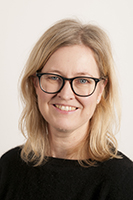Faglige interesser
- Familiesosiologi
- Demografi
- Likestilling
- Kvantitative metoder
Undervisning
Underviser og veileder hovedsakelig i familiesosiologi, likestilling og kvantitative metoder.
Bakgrunn
Utdanning
- ph.d. (sosiologi), Universitetet i Oslo 2006
- cand.polit. (sosiologi), Universitetet i Oslo 1996
Arbeidserfaring
- Forskningsassistent, Norges Byggforskningsinstitutt 1996-1998
- Førstekonsulent, Forsker, Seniorforsker, Statistisk sentralbyrå 1998-2016
- Forskningsleder, Statistisk sentralbyrå, 2014-2016
